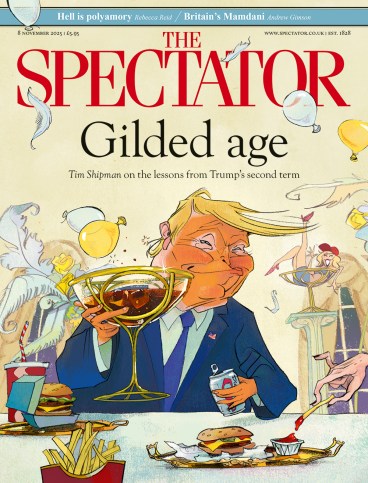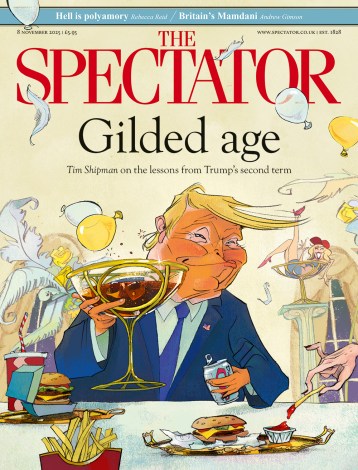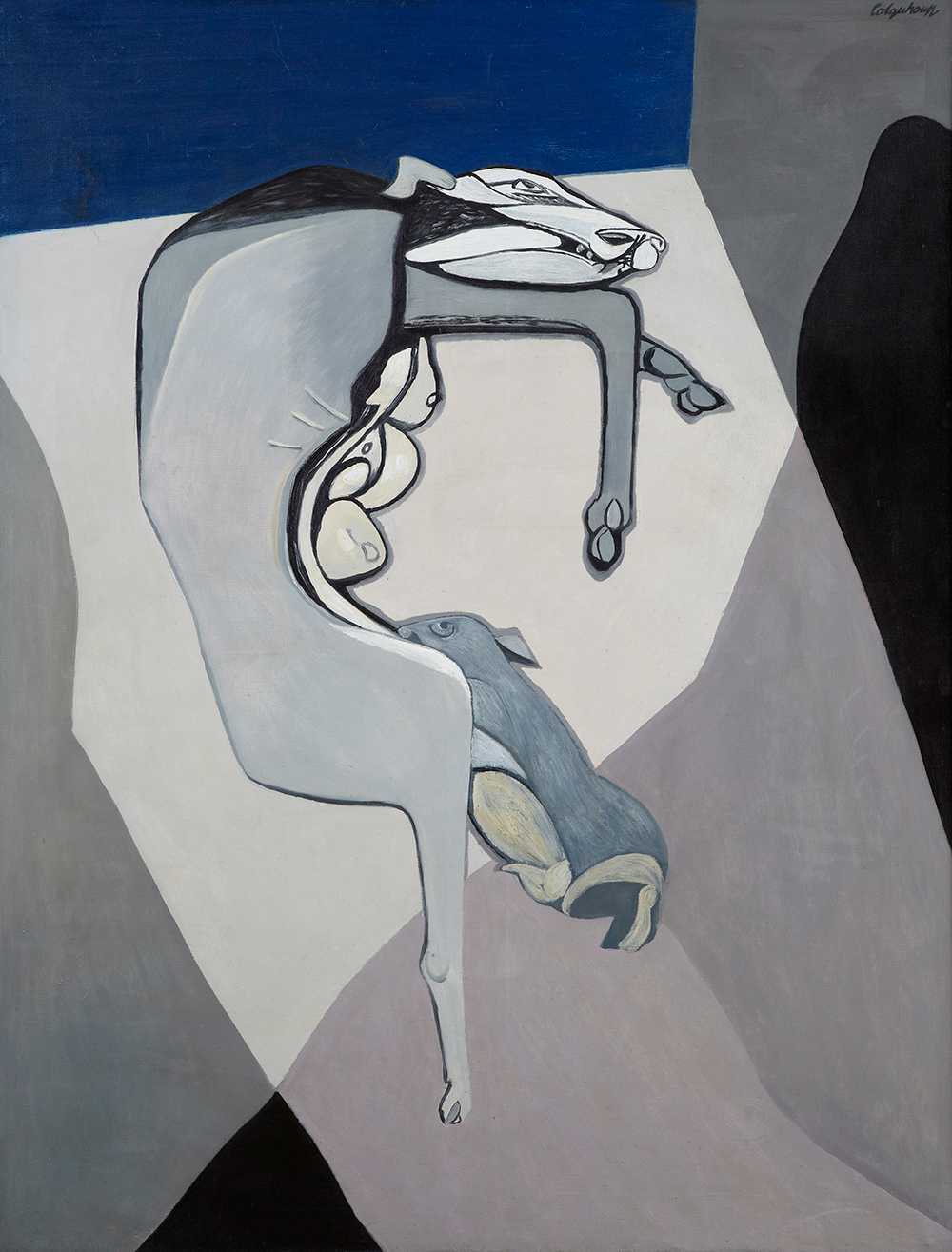
The Two Roberts, Robert MacBryde (1913-66) and Robert Colquhoun (1914-62), are figures of a lost British bohemia. Both born in Ayrshire, they met on their first day at the Glasgow School of Art, becoming lifelong partners and painters. Well-connected in louche literary London, their conversational barbs were recorded by Julian Maclaren-Ross, their jig-dancing antics noted by Joan Wyndham, their drunken fights observed by Anthony Cronin – so that one sometimes forgets what sort of art they made. This show, staged in a former municipal building in Lewes, is a reminder.
The work is haunted, unbeautiful British neo-romanticism, second cousin to Piper and Sutherland. They established this angsty, angular modernist style in the 1940s. MacBryde’s over-worked still lifes of past-it fruit and fish heads speak of privation; Colquhoun’s ‘Three Graces’ (1942-3) look as though they are queuing for a bus that will never come. His ‘Woman Ironing’ (1958) is monumentally dour, with claw-like hands and sternly pursed lips, but at least she has an iron – apparently young MacBryde had to make do wi’ just a heated spoon. Wyndham Lewis, their friend and sometime neighbour wrote in 1947 in The Listener that Colquhoun has ‘a grave dug behind all his canvases’.
And they had started out so hopefully – star pupils pulled out of poverty by their talent. There is a touch of the belle époque in the early work, represented here by Colquhoun’s blowsy ‘Study for Hat Shop’, 1936. He came top of his year at Glasgow School of Art; MacBryde came second. Colquhoun won the £120 international travelling scholarship, but it was clear he could not go without his friend, so the school made a one-off bursary for MacBryde to join him.
They visited every great European capital – excepting Munich, because of some slight difficulty over there with inflation. The trip forged their mature style. Bodies are refracted, faces mask-like, eye sockets empty. The two Roberts also saw London at the height of the Blitz, and MacBryde captured the city’s devastation in ‘Ave Maria Lane’ (1941), which has a bruised-colour intensity.
It is hard to differentiate the two painters – the Oxford Dictionary of National Biography gives them a shared entry, while Wyndham Lewis called them ‘one organism’. But a pleasure of this show is forming one’s own view. To me there is a lyrical grace to MacBryde, known playfully as MacBraque. His still lifes strain towards a European luxury, even when he’s only got old bits of cow before him. When he procures a cantaloupe, the brushstrokes are positively caressing. While MacBryde was the more domestic partner, Colquhoun took the lead professionally. His vision was tortured, his figures, in paint or scratchy lithographs, are chilling and eldritch.
MacBryde died a few years later, run over in 1966 outside a pub in Dublin while dancing a jig
The Roberts were a few years older than John Minton, John Craxton and Lucian Freud, who looked up to them; in turn, the Roberts looked up to Polish emigré Jankel Adler, imbibing his cubism, which had come directly from source – Adler taught alongside Paul Klee.
In 1948, a glittering career still seemed in sight, when Alfred Barr, director of MoMA, came to Britain, and picked five painters’ work to take home: Burra, Freud, Bacon, MacBryde and Colquhoun. Unfortunately the works he chose were barely seen again. The Roberts developed a bad case of Sohoitis, propping up the Colony Room bar with Bacon and co. But there’s no party mood in the work. The Celtic get-ups they designed for a Léonide Massine ballet at Covent Garden, Donald of the Burthens, seem pretty standard, while everything Colquhoun paints looks sinister. In ‘Figures in a Farmyard’ (1953) even the pig would murder you. ‘Bitch and Pup’ (1958), painted for his Whitechapel retrospective, is abject yet compelling, with a new certainty.
And yet it all stalled. In the 1950s they ended up working as nannies to the four children of the writer Elizabeth Smart. The children remember them fondly, though as erratic caregivers, failing to return from the pub on market day, or fighting in the garden at night.
Hard-drinking Colquhoun didn’t have long left to live. In 1962, he died in MacBryde’s arms, after having a heart attack while at the easel – the work is exhibited here, an unfinished ‘Danse Macabre’. MacBryde, bailed out by Bacon, as by so many friends and institutions, died a few years later, run over in 1966 outside a pub in Dublin while dancing a jig. The show can’t hide the fact that their artistic output diminishes badly, but the love story is given consoling prominence.
And there is a better way to remember them, presented in the last room: a 12-minute black-and-white film by Ken Russell, made in 1959, suffused with languorous admiration.








Comments